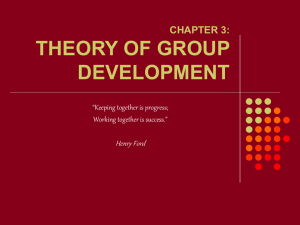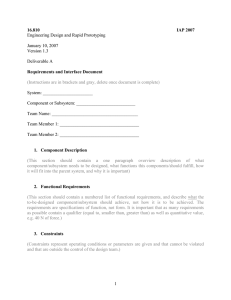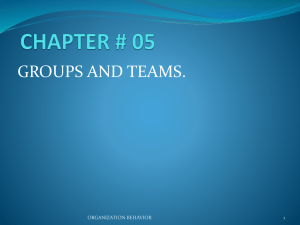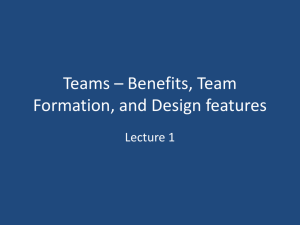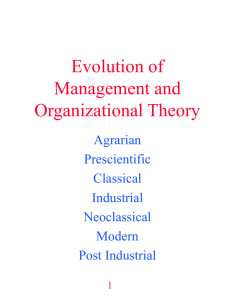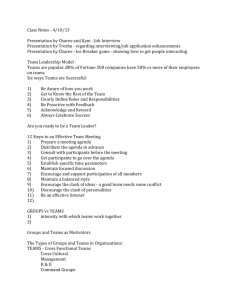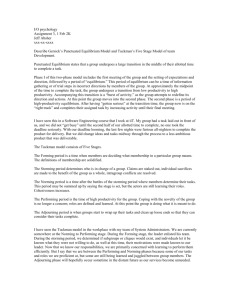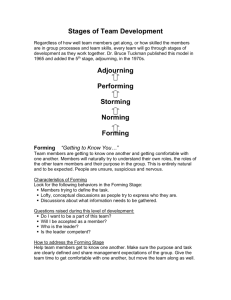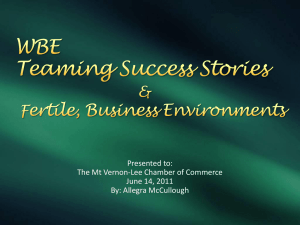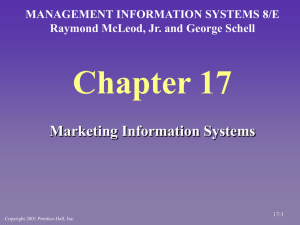How does the family participate in the exceptional child's
advertisement
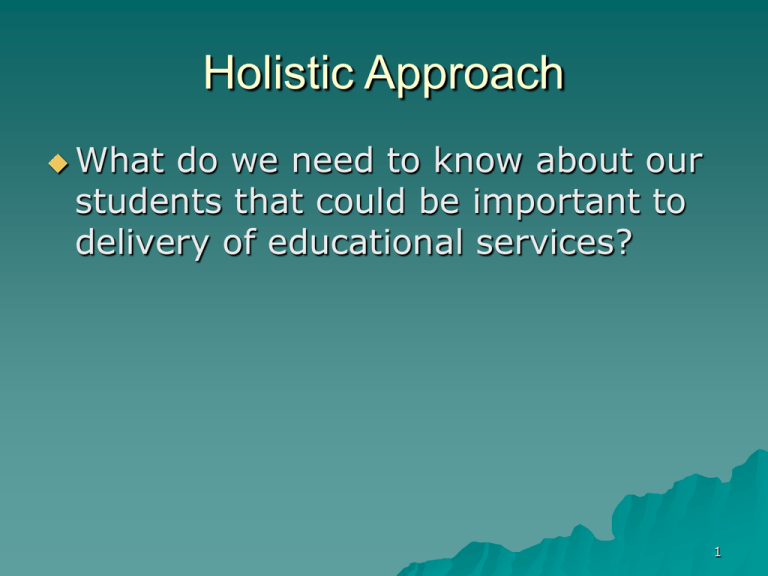
Holistic Approach What do we need to know about our students that could be important to delivery of educational services? 1 Chapter 2: Family Life Cycle Stage 1: Newly married couple Stage 2: Families with young children (0-5) Stage 3: Families of Elementary Aged Children Stage 4: Families with Adolescents Stage 5: Families Launching Children Stage 6: Families in Later Life 2 What is the legal basis for family involvement in special education? IDEA requires that families be given every opportunity to participate in each step of their child’s school program. In addition, it is just good common sense that families be involved. 3 How does the birth of an exceptional child affect the family? The birth of a child with a disability may violate a family’s expectations. Parents may experience shock, followed by grief, on learning their child has a disability. Anger is another common emotion parents grapple with. Most parents reach a point of adjustment and acceptance. Shock, anger, grief, anger, and acceptance may recur throughout child rearing. 4 What are some of the ways in which exceptional children contribute to the strength and richness of a family? Being a source of joy Providing a means of learning life’s lessons Giving and receiving love Supplying a sense of blessing or fulfillment Contributing a sense of pride Strengthening the family (Turnbull & Turnbull, 1990, p. 151) 5 Family Systems Conceptu al Framewor k 6 Family Characteristics Characteristics of Exceptionality Characteristics of the Family Personal Characteristics Special Challenges 7 Family Functions 8 How can the family members and professionals learn to work together as partners? Evaluate your communication skills. Be flexible in your expectations and requirements for families. Build on strengths rather than focusing on negatives. 9 Deliberate steps Parents have the right – to be informed and to consent – to participate in placement and program decision – to due process – and to not participate 10 Fundamentals of Collaboration Characteristics – Voluntary – Requires Parity – Based on Mutual Goals – Depends on Shared Responsibility for participation and decision making – Sharing of Resources – Share Accountability for Outcomes 11 Emergent Characteristics Individuals who collaborate vale this interpersonal style Professionals who collaborate trust one another A sense of community evolves from collaboration 12 Societal trends Directly related to collaboration is a feeling of ownership and commitment which evolves through a collaborative activity. Person- to – person interactions are growing (even with the technology explosion) We are turning to collaboration and reliance on others to accomplish our goals. 13 School Collaboration There is a trend where school staff members are meeting and jointly planning staff development activities that are relevant to their particular school. Concept of teaming. Student learning approaches emphasize collaboration. Principals are forming school leadership teams which share responsibility for decisions. 14 Special Education Collaboration Program philosophies: LRE, mainstreaming, integration, inclusion Service delivery options: Intervention assistance teams, coteaching and consultation Specialized instruction: Peer tutoring, adaptive instruction, modified curriculum 15 School structure Not necessarily conducive to collaboration. Classrooms are often private domains. Student teaching practicum Problem solving steps Collaborative model is expensive 16 PIGS FACE Johnson & Johnson Collaborative Teaming Process Positive Assigned Roles interdependence – Facilitator – Recorder Individual – Timekeeper accountability – Observer Group Processing – Encourage Social Skills – Jargon-buster FACE to face interactions 17 How does the family participate in the exceptional child’s development at every stage of life? Early intervention : Individualized Family Service Plan (IFSP). Developed collaboratively between family and the family service team. Minnesota has the IIIP Under IDEA, parents are encouraged to be active members of their child’s decision making team IEP through IEP/ITP Often as continuing care givers throughout adulthood. 18 Complexities of Collaboration Marilyn Friend, 2000 19 Teaming Team approaches have been integral in special education and related services. “An education team is a set of interdependent individuals with unique skills and perspectives who interact directly to achieve their mutual goal of providing students with effective educational programs and services.” (Friend & Cook, 2000) 20 Characteristics of Teams Awareness of team membership Regulation of Interactions by Shared Norms Independence of Team Members Team Members; Unique Skills and Perceptions Shared Goal of Effective Service Delivery 21 Developmental Stages Forming Storming Norming Performing Adjourning 22 Forming members examine their task, learn more about each other, and clarify their reason for existing as a team. Members tend to want clear instructions from others and they are polite in their efforts to learn about each other and their purpose. 23 Storming members resolve issues of power, leadership, procedures, and goals. Demonstrates that a group can become a team – members are more comfortable with each other & communicate freely. 24 Norming teams establish role relationships and define leadership roles and procedures for accomplishing their work. Members begin to build trust and they redefine and establish role relationships and procedures, Handle conflicts, and establish patterns of functioning. 25 Performing members align themselves and work toward achieving the team’s goal. A teams development levels off and it can devote its primary efforts to accomplishing its goals. 26 Adjourning having completed its task, the team disbands 27 Benefits of Teams Efficient and potential for high quality outcomes. Different disciplinary perspectives Implementation of a coordinated and coherent program is more efficient when everyone is in communication with each other. Trust 28 Team models (disciplinary) Multi Inter Trans Information Exchanged Shared Shared (ongoing) Service goals Discrete services Coordinated services Holistic services Roles/tasks (goals) Independent Complementary Blended/ Integrated 29 Student Centered Teams Special Education Teams Student- Centered Problem-Solving Teams – Teacher Assistance Teams – Intervention Assistance Teams – Pre-referral Intervention Teams – Service Delivery Teams: co-teaching, teaching teams in middle school, & grade level teams. 30 31 Effectiveness of Teams Teams’ goals are clear Members’ needs are met Members have individual accountability Group process maintain the team Team members have leadership skills 32 33 Family Interaction Patterns ..”behavior is not solely dependent upon what is going on in that person’s head. Rather, the behavior is maintained by a complex set of interactions that occur with regularity and can be predicted by observing the family system over time (Nichols & Schwartz, 1995)” 34 Boundaries Cite some examples of families or systems in which you (based on the reading of Ch. 3) have determined their place on the boundary definition continuum. disengaged clear enmeshed (p. 47) 35 Family Structures Spousal subsystem Parental subsystem Sibling subsystem Extrafamilial subsystem 36 Functions of subsystems Spousal Parental Sibling Extra familial Tasks/ support 37 Assignments for next week. Meet in Library Rotunda Be prepared to ask some questions…. 38 Major Family Systems Models (appendix A) Satir Communication Process Model Bowen’s Multigenerational Theory Structural Strategic Family Therapy Family Therapy 39 Family Systems Models Conceptual Framework Activity 4 groups- divide up the class Compare (similarities and differences) of the 4 conceptual frameworks’ models discussed in Appendix A of your text. Each group will decide how to tackle this comparison activity and present the accomplished goal. Your group will come to a consensus on which family system model most appropriately assists professionals in understanding professionals and why. 40 41
